![]()
![]()
![]()
Use LEFT and RIGHT arrow keys to navigate between flashcards;
Use UP and DOWN arrow keys to flip the card;
H to show hint;
A reads text to speech;
132 Cards in this Set
- Front
- Back
|
Ambrogio Lorenzetti, The Effects of Good Government |
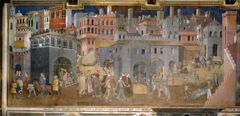
Frescoes, Palazzo Pubblico, Sienna, 1338-1339 |
|
|
Giotto, Bardi Chappel |
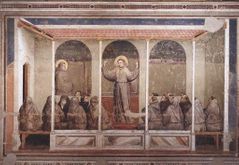
Frescos, Santa Croce, Florence (Franciscan Church), 1360s |
|
|
Bernardo Rossellino, Tomb of Leonardo Bruni |

Santa Croce, Florence (Franciscan Church), c 1444-47 |
|
|
Lorenzo Ghiberti, Abraham and Isaac competition bronze panel |
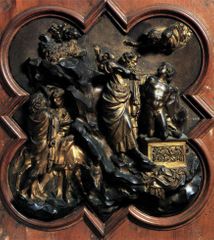
Florence Baptistry north doors, 1401
|
|
|
Lorenzo Ghiberti, St. Matthew |
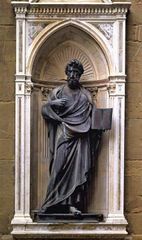
Statuefor the façade of Or San Michele, Florence, 1419-1423
|
|
|
Filippo Brunelleschi, Abraham and Isaac competition bronze panel |

Florence Baptistrynorth doors, 1401
|
|
|
FilippoBrunelleschi, Duomo |
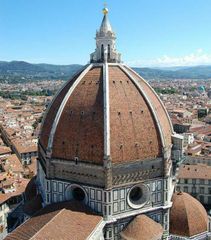
Florence Cathedral, 1420-1436, (herringbonebrickwork, double shell)
|
|
|
FilippoBrunelleschi, Ospedale degli Innocenti |
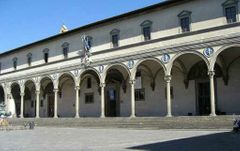
first phase, 1419-1427 |
|
|
Masaccio, Holy Trinity |
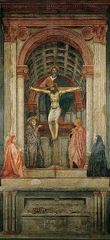
Santa Maria Novella,Florence, 1424-27 |
|
|
Fra Angelico, Annunciation |
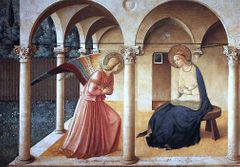
Frescos, San Marco, Florence, 1438-1447
|
|
|
Fra Angelico, Noli meTangere |
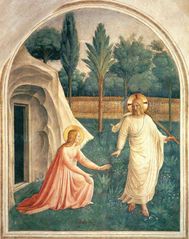
Frescos, San Marco, Florence, 1438-1447 |
|
|
Fra Angelico, Crucifixion |
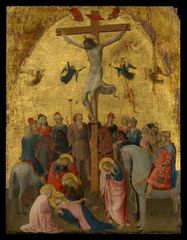
Frescos, San Marco, Florence, 1438-1447 |
|
|
Fra Angelico, Adorationof the Magi |
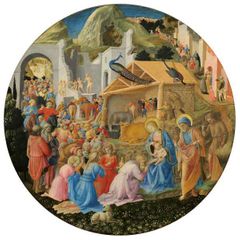
Frescos, San Marco, Florence, 1438-1447 |
|
|
Cosimo de’ Medici’s, private cell |
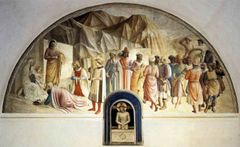
(#38) in San Marco |
|
|
SandroBotticelli, Adoration of the Magi |

1474-75 |
|
|
Sandro Botticelli, Portrait of a Man with a Medal of Cosimo theElder |
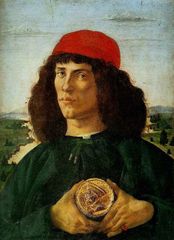
1474-75 |
|
|
Sandro Botticelli, Primavera |
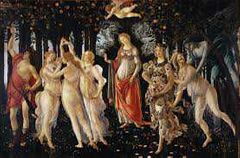
1477-82 |
|
|
Sandro Botticelli, The Birth of Venus |
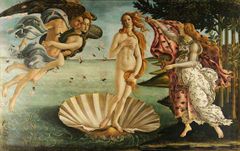
1482-86 |
|
|
Donatello, Saint George |

Statue for the façadeof Or San Michele, Florence, 1415-1418 |
|
|
Donatello, David |
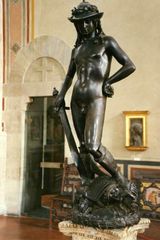
c.1440-60 |
|
|
Donatello, Judith and Holofernes |

1455-60 |
|
|
Donatello, Harrowing of Hell |
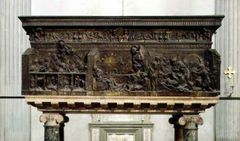
Bronze pulpit, 1466 |
|
|
Andrea Del Verrocchio, David |
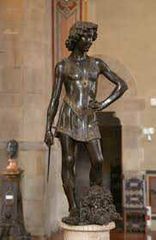
1475-76 |
|
|
Michelozzo di Bartolomeo, PalazzoMedici Riccardi |
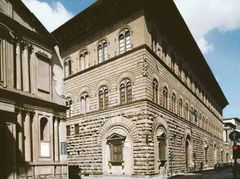
1444-1484 |
|
|
Old Medieval worldview |
Feudal Society divided into three distinct tiers: •Aristocracy at the top •The Church in the middle •The laboring classes, the peasantry, at the bottom |
|
|
The role of bankers and merchants / Medici family |
Thefamily ruled Florence, Italy with their wealth. They got rich from loans that charged interest. |
|
|
The Black Death of the 1350s as a springboardfor economic growth and cultural touchstone |
•The economic consequences of the Black Death are trade declination and a rise in the price of labor because of the lack of workers. With less people, the demand food went down, lowering prices.Landlords paid more for labor but their income for rent declined. This freed peasants from serfdom. •Created new opportunities •Bankers and textile merchants were expanding their trading empires all over Europe •Bankers, such as the Medici, begin to curry favor with the Papacy, which needs infusions of money to stay afloat |
|
|
Renaissance |
• a period, roughly 1450-1600, of innovations on the part of artists and architects, of excitement in rediscovering the achievements of the Classical world (ancient Greece and Rome), funded and sponsored by the patronage of a wealthy commercial classThe Renaissance: literally a “rebirth” of learning and culture, and most importantly, a union of Classical ideals and Christian values • the transitional movement in Europe between medieval and modern times beginning in the 14th century in Italy, lasting into the 17th century, and marked by a humanistic revival of classical influence expressed in a flowering of the arts and literature and by the beginnings of modern science |
|
|
Humanism |
Were students of the classics, of the knowledge and the wisdom of the ancient world. They went right back to the origins of Western thought in the great Greek philosophers. Humanism is a philosophical stance that emphasizes the value and agency of human beings, individually and collectively. Humanists prefer critical thinking and evidence(rationalism and empiricism) over acceptance of dogma or superstition. |
|
|
Antiquity |
is the period of cultural history between the 8th century BC and the 6th century AD centered on the Mediterranean Sea,[note 1] comprising the interlocking civilizations of ancient Greece and ancient Rome known as the Greco-Roman world. It is the period in which both Greek and Roman societies flourished and wielded great influence throughout much of Europe, Northern Africa, and West Asia. The humanists recovered and translated the texts of antiquity |
|
|
Florentine Guilds |
Represented craftsmen and the professions, like unions today: sculptors and stoneworkers, textile workers, metal workers, masons, builders, and lawyers—all had their own guilds. Competition between the guilds, and the artists who belonged to them, helped to drive artistic innovation. The guilds of Florence were secular corporations that controlled the arts and trades in Florence from the twelfth into the sixteenth century. These included seven major guilds, five middle guilds and nine minor guilds. |
|
|
Fresco painting |
Frescois a technique of mural painting executed upon freshly laid lime plaster. Wateris used as the vehicle for the dry-powder pigment to merge with the plaster,and with the setting of the plaster, the painting becomes an integral part ofthe wall. |
|
|
Tempera versus Oil painting |
Temperais a color bound by a sticky binder or by egg yolk. In the European traditionit is opposed to oil painting, with its lower, dimmed and less shiny nature. |
|
|
Linear Perspective |
Linear perspective, asystem of creating an illusion of depth on a flat surface. All parallel lines(orthogonals) in a painting or drawing using this system converge in a singlevanishing point on the composition's horizon line. |
|
|
Limbourg brothers, Très Riches Heures |
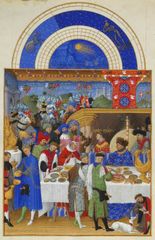
1413-1416
|
|
|
Claus Sluter, Well of Moses |
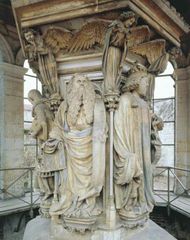
Chartreuse de Champmol, Dijon, France, 1396-1406 |
|
|
Claus Sluter, Funeral Monument for Philip the Bold |
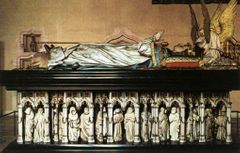
Duke of Burgundy, 1414 |
|
|
Robert Campin (Master of Flémalle), Merode Altarpiece |
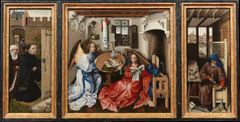
1425-1428 |
|
|
Jan van Eyck, Giovanni Arnolfini and His Wife |
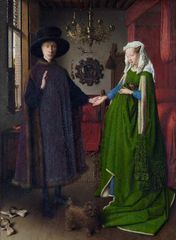
1434 |
|
|
Jan van Eyck, Man in a Red Turban |
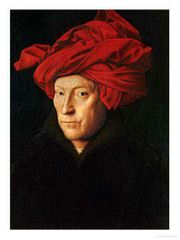
1433 |
|
|
Jan van Eyck, The Rolin Madonna |
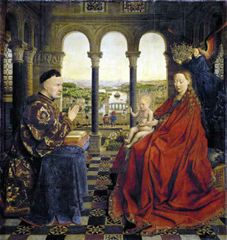
1435 |
|
|
Hôtel-Dieu de Beaune, foundedby Nicolas Rolin |

1443, Chancellor of Burgundy, depicted by van Eyck in theRolin Madonna |
|
|
Roger van der Weyden, The Last Judgement |

Hôtel-Dieu de Beaune, 1425-1442 |
|
|
Hieronymus Bosch, The Garden of Earthly Delights |
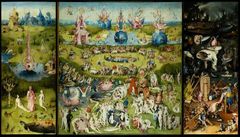
insideright panel: Hell, 1490-151 |
|
|
Albrect Durer, The Apocalypse (Revelations of St. John) |
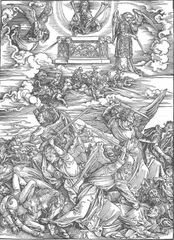
15 woodblock prints, First edition in1498, second edition in 1511 |
|
|
Albrect Durer, Self-Portrait, 1493 |
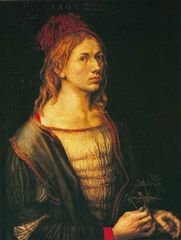
1493 |
|
|
Albrect Durer, Self-Portrait, 1506 |
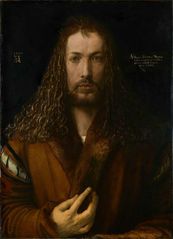
1506 |
|
|
Albrect Durer, Nature Watercolors |
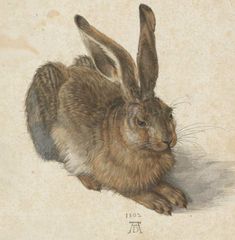
1502-1506 |
|
|
Albrect Durer, Knight, Death, and the Devil |
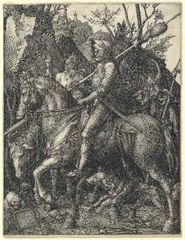
engraving, 1513 |
|
|
Albrect Durer, St.Jerome in His Study |
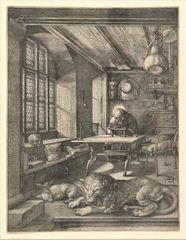
engraving,1514 |
|
|
Albrect Durer, Melancholia |
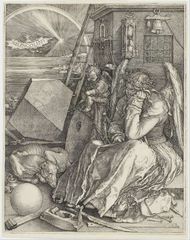
engraving, 1514 |
|
|
Mathias Grunewald, Ishelheim Altar |
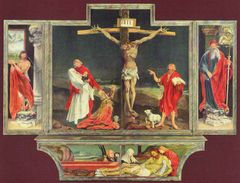
1515, Antonie monastery that specialized in thecare of skin diseases (“the ultimate painting in Christian Art”)
|
|
|
Late medieval courts of France (Bruges, Brussels, Burgundy) |
The art of Northern Europe grew from there. |
|
|
Nuremburg |
Nazi's stole artwork there? Nuremberg Chronicle = history of world. The Nuremberg Chronicle is an illustrated encyclopedia consisting of world historical accounts, as well as accounts told through biblical paraphrase. |
|
|
Oil paint |
During the 15th century, Jan van Eyck, a famous Belgian painter developed oil painting by mixing linseed oil and oil from nuts with diverse colors. |
|
|
Printmaking |
Woodcut, a type of relief print, is the earliest printmaking technique, and the only one traditionally used in the Far East. It was probably first developed as a means of printing patterns on cloth, and by the 5th century was used in China for printing text and images on paper. Woodcuts of images on paper developed around 1400 in Japan, and slightly later in Europe. These are the two areas where woodcut has been most extensively used purely as a process for making images without text. |
|
|
Woodcuts versus Engravings |
In a woodcut print, a piece of wood is cut along the grain (if you visualize a plank of wood or wooden flooring, the broad side is here the artist would carve) to produce an image. When printed, the carved out areas remain white and the remaining area receives the ink. Wood engraving, on the other hand, is a much newer process.Instead of carving along the grain, the artist cuts into the end of the block of wood. This can make wood engraving blocks very expensive, as to get a large plate one needs a section of unblemished wood from a large hardwood tree trunk or branch. However, wood engravings allow for much greater detail than a traditional woodcut. |
|
|
Book of Hours |
The Book of Hours was a prayer book for the laity that developed in late medieval Europe and that was used for private devotion. These works were often personalized for individual patrons and illuminated with miniature paintings depicting the life of Christ, the Virgin Mary, and individual saints. |
|
|
Donor Portraits |
A donor portrait or votive portrait is a portrait in a larger painting or other work showing the person who commissioned and paid for the image, or a member of his, or her, family. |
|
|
Altarpieces |
An altarpiece is an artwork such as a painting, sculpture or relief representing a religious subject made for placing behind the altar of a Christian church. |
|
|
Raphael, Transfiguration |
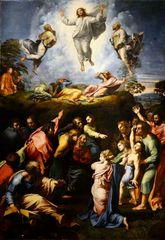
1520 |
|
|
Raphael, Philosophy (School of Athens) |
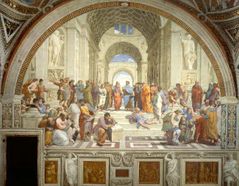
1509-1511 |
|
|
Raphael, Theology (Disputa) |
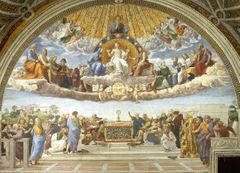
1509-1511 |
|
|
Raphael, Justice and Literature |
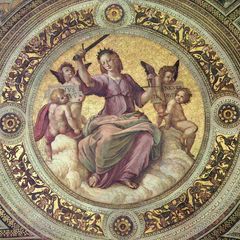
1509-1511 |
|
|
Raphael, Loggia di Psiche in the Villa Farnesina |
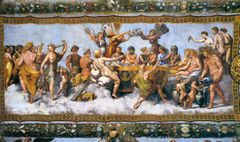
1517-18 |
|
|
Leonardo da Vinci, Last Supper |
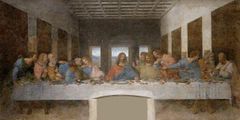
ca. 1495-1498 |
|
|
Leonardo da Vinci, The Virgin and St. Anne |
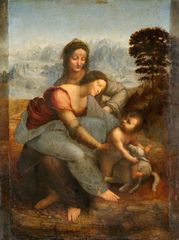
1507 |
|
|
Leonardo da Vinci, anatomical, technical, scientific drawings |
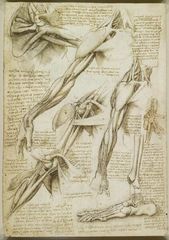
Multiple years. |
|
|
Michelangelo, David |
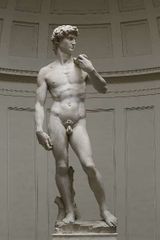
1501-1504 |
|
|
Michelangelo, Tomb of Julius II |

1505-1545, including the Moses |
|
|
Michelangelo, Sistine Chapel Ceiling |
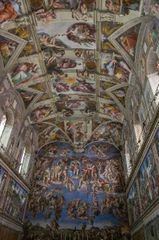
Vatican City, Rome, 1508-1512 |
|
|
Michelangelo, The Last Judgement |
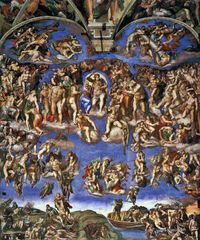
Sistine Chapel,altar wall, fresco, 1534-1541 |
|
|
Michelangelo, Capitoline Hill |

1536 |
|
|
Michelangelo, Rondanini Pieta |
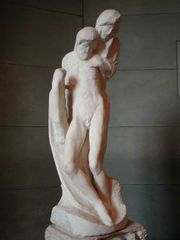
1552-1564 |
|
|
Jacapo Sansovino, Loggetta |
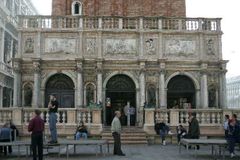
1538-1546 |
|
|
Titian, Venus of Urbino |

1534 |
|
|
Titian, Venus and Cupid |
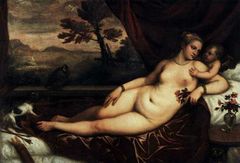
1550 |
|
|
Titian, Assumption of the Virgin |
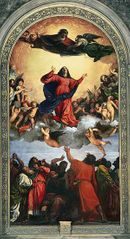
in the Frari Church, Venice, 1516-1518 |
|
|
Titian, Madonna of the Pesaro Family |
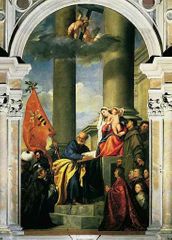
1519-1526 |
|
|
Tintoretto, The Last Supper |
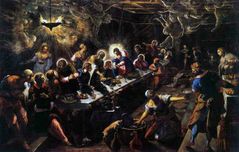
San Giogio Maggiore, 1592-1594 |
|
|
Palladio Il, Rendentore |
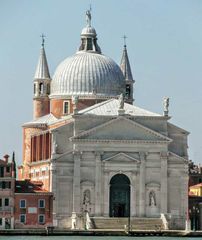
1577-1592 |
|
|
Palladio, Villa Barbaro at Maser |
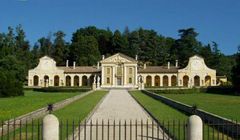
1560-1570, the "Nymphaeum" |
|
|
Veronese, Frescos in the Villa Barbaro at Maser |
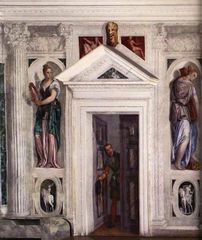
1560-61 |
|
|
Veronese, The Last Supper (Feast in the House of Levi) |
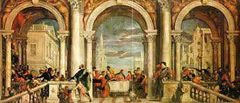
1573 |
|
|
Giorgio Vasari’s Lives of the Artists |
The central body of work related to Vasari is a series of biographies of Italian painters and sculptors titled Lives of the Artists. Vasari worked on the text for several decades, building up a sourcebook of artists’ careers from three centuries of recent history. It was the first time anybody had attempted to write a systematic history of art, complete with a theoretical framework for how art was thought to have developed. |
|
|
The changing status of the artist |
One of the things that distinguishes artists of the High Renaissance from those who came before them is we find them compared with princes. We find not only their works, but also their private lives the subject of historical accounts and literature. |
|
|
The heroic ambition of the artist |
Leonardo has the ambition to developing new methods for wall painting that turns out to be catastrophic.The painting began to decay as soon as it was finished. As Kathleen Weil-Garris Brandt says, this was a major characteristic of High Renaissance artists. These “heroic enterprises” of vast scale and ambition that could be realized only in part, in fragments, because they were either beyond the scale of actual human achievement, or because the technologies to make them did not yet exist. “The ambitious scale of the project itself doomed it eventually to incompletion, reduction, or transformation. |
|
|
Pope Julius II |
Terribilita: A word also used to describe Pope Julius II. This artist and Pope met their match in each other. |
|
|
The Sack of Rome, 1527 |
In 1527, Italy was invaded by an imperial (the Holy Roman Empire) army from the North, and Rome was sacked. Many artists flee north, some to Florence, others to Venice. In 1534, as Rome is in the process of rebuilding after the sack, Michelangelo, who had fled to Florence, returns to the Sistine Chapel to paint the Last Judgement on the wall above the altar. His version of The Last Judgement, in its savagery, it’s gloom, it’s pessimism, is a response to the 1527 sacking of Rome and the changes atmosphere in the city. |
|
|
Difference between Venetian and Central Italian painting |
A fundamental difference of technique separated Venetian artists from those of Central Italy. ... Venetian masters perfected new resins that allowed them to paint on canvas rather than panels, an innovation that gave their coloristic techniques greater depth and luminosity. |
|
|
Sfumato |
Sfumato is a painting technique for softening the transition between colours, mimicking an area beyond what the human eye is focusing on, or the out-of-focus plane. |
|
|
Terribilita |
Terribilità, the spelling in modern Italian, or terribiltà, as Michelangelo's 16th century contemporaries tended to spell it, is a quality of provoking terror, awe, or a sense of the sublime, in the viewer, that is ascribed to his art. |
|
|
Designo |
From the Italian word for drawing or design, carries a more complex meaning in art, involving both the ability to make the drawing and the intellectual capacity to invent the design. |
|
|
Colorito |
Is a term usually applied to 16th-century Venetian painting in which colour is employed in a dominant manner, for sensual expressive purposes and as an important compositional element. |
|
|
Serrenissima |
? The Most Serene, when it was a large trading empire. The term was used to acknowledge Venice as a sovereign state along with other Maritime Republics in the same region. |
|
|
poesie |
Term used in the art theory of the Italian Renaissance for a work inspired by the myths, fables and legends related by ancient authors such as Ovid, Virgil and Apuleius. It may be contrasted with an Istoria, a picture based on a historical subject. |
|
|
Mannerism |
The term comes from the Italian “maniera,” which means “manner” or “style.” •The term can sometimes have a pejorative meaning: something that is too stylish, or too elegant, can seem affected, or artificial. •In fact, Mannerist artists were interested to further explore the boundaries between natural and artificial that earlier Renaissance artists had begun. •There’s something self-conscious about these works, and that’s OK, it’s what makes them interesting. •Beginning around 1520, in his designs for the Medici Chapel, Michelangelo himself would move away from his own earlier conception of the perfect human body (e.g. David), to achieve a super-stylized, impossibly elegant, and unnatural ideal of beauty in his sculptures. |
|
|
Maneria |
(Italian: “manner,” “style”) in art criticism, certain stylistic characteristics, primarily in Mannerist painting (see Mannerism). In the 14th and 15th centuries, manière in France and maniera in Italy designated refined, courtly manners and sophisticated bearing. |
|
|
Volterra |
“Volterra is the most northerly of the great Etruscan cities of the west. It lies back some thirty miles from the sea, on a towering great bluff of rock that gets all the winds and sees all the world, looking out down the valley of the Cecina to the sea, south over vale and high land to the tips of Elba, north to the imminent mountains of Carrara, inward over the wide hills of the Pre-Apennines, to the heart of Tuscany.You leave the Rome-Pisa train at Cecina, and slowly wind up the valley of the stream of that name, a green, romantic, forgotten sort of valley, in spite ofthe come-and-go of ancient Etruscans and Romans, medieval Volterransand Pisans, and modern traffic. But the traffic is not heavy. Volterra is a sort of inland island, still curiously isolated and grim.” --D.H. Lawrence, “Volterra,” Etruscan Places, 1932 |
|
|
D. H. Lawrence, Etruscan Places (1932) |
Sketches of Etruscan Places and other Italian Essays, or Etruscan Places, is a collection of travel writings by D. H. Lawrence, first published posthumously in 1932. In this book Lawrence contrasted the life affirming world of the Etruscans with the shabbiness of Benito Mussolini's Italy during the late 1920s. |
|
|
Pier Paolo Pasolini, La Ricotta (1962) |
La ricotta ("The Ricotta", a curd cheese) is a short film written and directed by Pier Paolo Pasolini in 1962 and is part of the omnibus film Ro.Go.Pa.G. It is often considered the most memorable portion of Ro.Go.Pa.G and the height of Pasolini's creative powers and social criticism. |
|
|
Michelangelo, drawing of dead Christ |
Michelangelo`s emotive drawing in black chalk of the Virgin and onlookers lamenting the dead body of Christ was of such fame in the nineteenth century as to be known as the `Warwick Pietà` after the Earl of Warwick to whom the sheet belonged until acquired by the BM in 1896. |
|
|
Aristotele da Sangallo’s copy of Michelangelo’s Battle of Cascina |
The cartoon was copied by several artists, the most notable extant copy being by Michelangelo's pupil Sangallo. Some of Michelangelo's preparatory drawings also survive, along with prints of part of the scene by Marcantonio Raimondi. According to Michelangelo's biographer Giorgio Vasari, the original cartoon was deliberately destroyed by Michelangelo's rival Bartolommeo Bandinelli because he was jealous of its fame; this occurred in 1512 upon the return of the Medici. |
|
|
Jacopo Sansovino, wax and wood model of the Deposition |
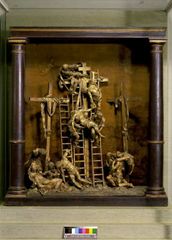
1511 |
|
|
Rubens’ copy of Leonardo’s The Battle of Anghiari |

1603 |
|
|
Andrea del Sarto, Pietà, engraving by Agostino veneziano |
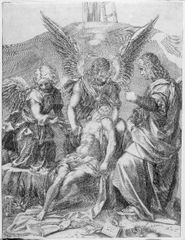
1516 |
|
|
Andrea del Sarto, Madonna of the Harpies |
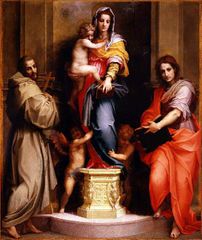
1517, Accademia Gallery, Florence |
|
|
Rosso Fiorentino, Descent from the Cross |
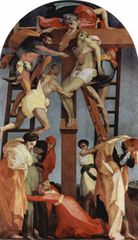
1521, Volterra |
|
|
Rosso Fiorentino, Marriage of the Virgin |
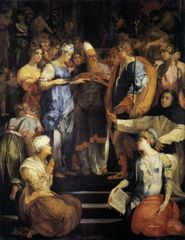
1523, San Lorenzo, Florence |
|
|
Rosso Fiorentino, Moses Defending the Daughters of Jethro |
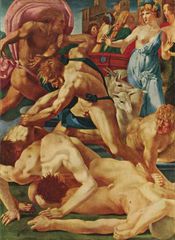
1523, Uffizi Gallery, Florence |
|
|
Rosso Fiorentino, Mars and Venus |
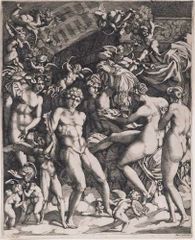
presentation Drawing, 1530 |
|
|
Jacopo Pontormo, Deposition |
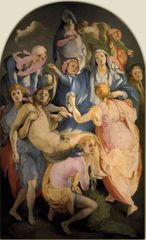
1525-158, Capponi Chapel, Church of Santa Felicità, Florence |
|
|
Jacopo Pontormo, Christ Before Pilate |
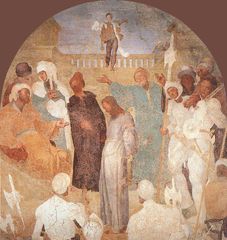
fresco, Certosa di Firenze, 1523-25 |
|
|
Agnolo Bronzino, Deposition of Christ |
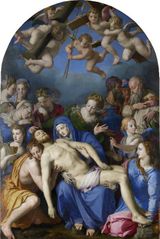
Musée des Beaux-Arts et d'Archéologie, Besançon, 1545 |
|
|
Agnolo Bronzino, Portrait of a Young Man |
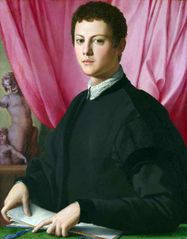
circa 1540 |
|
|
Agnolo Bronzino, Cosimo I de' Medici in Armour |
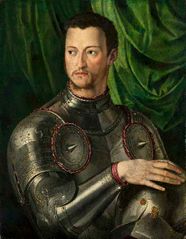
1545 |
|
|
Agnolo Bronzino, Leonora of Toledo with her son Giovanni de' Medici |
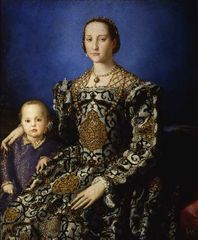
1545 |
|
|
Farnese Hercules |
The Farnese Hercules is an ancient statue of Hercules, probably an enlarged copy made in the early third century AD and signed by Glykon, who is otherwise unknown; the name is Greek but he may have worked in Rome. |
|
|
Baths of Caracalla |
The Baths of Caracalla in Rome, Italy, were the city's second largest Roman public baths, or thermae, likely built between AD 212 and 216/217, during the reigns of emperors Septimius Severus and Caracalla. They were in operation until the 530s and then fell into disuse and ruin. |
|
|
Palazzo Farnese |
Palazzo Farnese or Farnese Palace is one of the most important High Renaissance palaces in Rome. Owned by the Italian Republic, it was given to the French government in 1936 for a period of 99 years, and currently serves as the French embassy in Italy. |
|
|
Cardinal Alessandro Farnese (grandson of Pope Paul III) |
Alessandro Farnese, an Italian cardinal and diplomat and a great collector and patron of the arts, was the grandson of Pope Paul III, and the son of Pier Luigi Farnese, Duke of Parma, who was murdered in 1547. |
|
|
Cardinal Odoardo Farnese |
Odoardo Farnese was an Italian nobleman, the second son of Alessandro Farnese, Duke of Parma and Maria of Portugal, known for his patronage of the arts. He became a Cardinal of the Roman Catholic Church in 1591, and briefly acted as regent of the Duchy of Parma and Piacenza for his nephew Odoardo from 1622 to 1626. |
|
|
Fulvio Orsini |
Fulvio Orsini (11 December 1529 – 18 May 1600) was an Italian humanist, historian, and archaeologist. He was a descendant of the Orsini family, one of the oldest, most illustrious, and for centuries most powerful of the Roman princely families, whose origins, when stripped of legend, can be traced back to a certain Ursus de Paro, recorded at Rome in 998. |
|
|
Quadri Riportati |
Quadro riportato is the Italian phrase for "carried picture" or "transported paintings". It is used in art to describe gold-framed easel paintings or framed paintings that are seen in a normal perspective and painted into a fresco. |
|
|
Claude, Landscape with Narcissus and Echo |
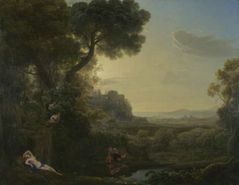
1644 |
|
|
Poussin, Landscape with Diogenes |

1648 |
|
|
Annibale Carracci (1560-1609), Bean Eater |
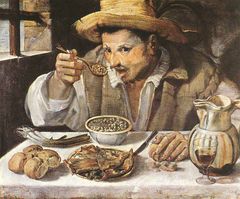
Rome, Galleria Colonna, c. 1595 |
|
|
Annibale Carracci (1560-1609), Camerino Farnese |
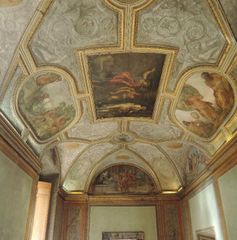
1595-1597 |
|
|
Annibale Carracci (1560-1609), The Choice of Hercules |
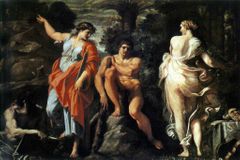
1596, Capodimonte, Naples |
|
|
Annibale Carracci (1560-1609), Loves of the Gods |
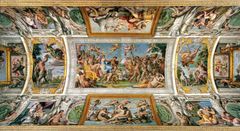
Farnese Gallery, Rome, 1597-1604 |
|
|
Annibale Carracci (1560-1609), Self-Portrait as a Self-Portrait |
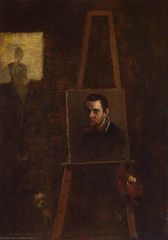
Hermitage, St. Petersburg, c. 1600 |
|
|
Annibale Carracci (1560-1609), Flight into Egypt |
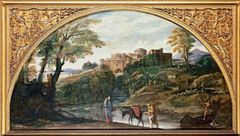
1604, Doria-Pamphili, Rome |

